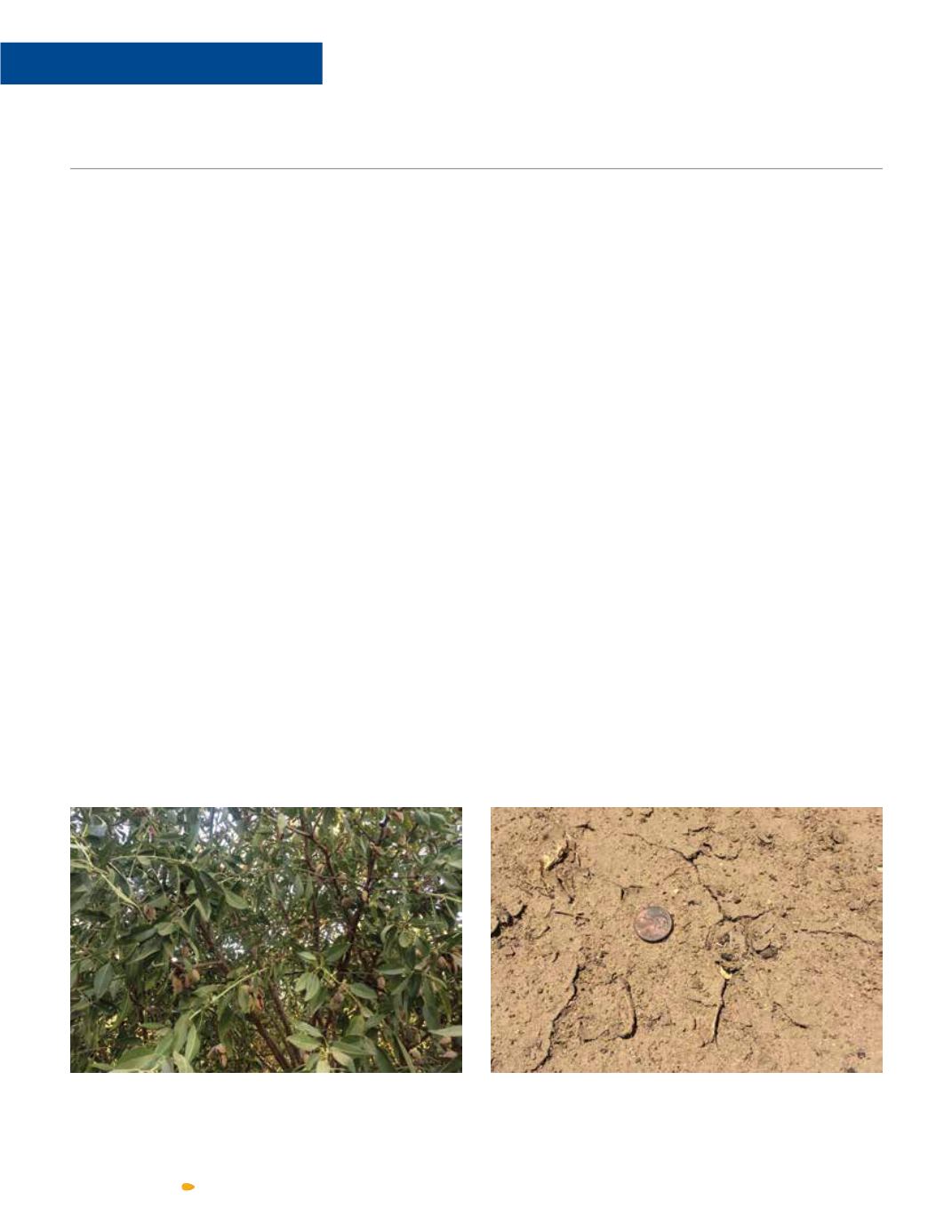
IN YOURORCHARD
TIME TO CONSIDER
With the hustle of harvest slowing down, late fall is a good time to walk the orchard and look for any issues that
can be addressed in the following months. Take time to reflect on the challenges of the season and be on the
lookout for the following:
1. Navel orangeworm (NOW).
Was damage higher
than expected
?
Were field samples collected and cracked
out
?
The damage reported from the processor is often 50
percent less than what was experienced within the field.
This is due to the harvesting process and that damage
percentage is measured by weight, not count, at the
processor. Remember, every 1 percent of damage is 25 lbs./
acre if averaging a 2,500 lb./acre crop. If damage was
high, were the trees winter sanitized
?
Mummy nuts serve as
the only food source for NOW between last year’s and this
year’s crop. Was a hull split spray applied
?
Which material
and at what volume
?
What type and how fast was the rig
speed
?
If this is unknown, better notes should be taken.
2. Stick tights.
Are there more than expected
?
Does
one variety have more stuck nuts than the other
?
If so,
what symptoms are observed
?
Gumming can occur with
hull rot, boron toxicity, or diseases such as anthracnose
or bacterial spot. Dead shoots often are due to hull rot.
Stick tights could also be due to uneven ripening from a
protracted bloom (common in self-pollinating varieties),
poor shake timing, or incorrect water management.
Sanitizing these mummies will need to occur to reduce
NOW pressure the following season.
3. Weeds.
What weeds presented a challenge to
manage this past year
?
Were applications of glyphosate
or glufosinate ineffective due to resistance or lack of
activity on weed spectrum
?
Are these weeds beginning
to spread across the field
?
Even more concerning, is there
a new weed problem emerging
?
The weeds present and
issues experienced will help with post- and pre-emergent
selection, timing, and rates.
4. Water infiltration issues.
Water infiltration problems
are becoming more common due to increased water
applications, low quality water, reduced cover crop
usage, compaction, and varying soil characteristics. After
an irrigation, are there visible puddles and signs of soil
crusts
?
Does water appear to run off the field
?
Does the
water create saturated zones underneath the emitters
?
Stick tights can occur for many reasons. Identifying the
causes can help increase yield and reduce shaker damage
to the trees.
Soil crusting and reduced water infiltration rates are
common in irrigated orchards. Soil samples from the
top few inches should be analyzed to determine which
amendments should be applied.
3 2
A L M O N D F A C T S


